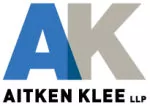In Airbus Helicopters v Bell Helicopter Textron, Justice Martineau of the Federal Court ordered Bell to pay $1.5 million in damages to Airbus for its infringement of Canadian Patent No. 2,207,787.
Airbus owns the 787 Patent, which relates to a helicopter landing gear known as "Moustache". Bell, after examining Airbus' Moustache landing gear, developed and made 21 copies of the "Legacy" landing gear, none of which were ever sold (either as part of a helicopter or as a stand alone item at an estimated cost $20,000 to $25,000). After being sued by an Airbus affiliate for infringement of the 787 Patent, Bell developed the "Production" landing gear, which was based on Legacy, and incorporated in helicopters that were eventually sold.
In the first phase of litigation, the Federal Court held that the Legacy landing gears infringed the 787 Patent, but that the Production landing gears did not. Nevertheless, since Bell had falsely claimed that the Legacy landing gear was the first implementation of the patented technology, profited from Legacy, and elected to proceed with Legacy despite concerns about similarities with Moustache, Justice Martineau also held that Bell's infringing conduct warranted punitive damages. That decision was upheld on appeal (see our previous post here).
Compensatory Damages
The second phase of litigation involved a 10 day trial to determine of the quantum of damages to be paid by Bell. Because the infringing landing gear assemblies were never sold, Justice Martineau noted that this case was unique. Airbus sought $2 million in compensatory damages, whereas Bell suggested $5,187. Justice Martineau applied the AlliedSignal factors to arrive at the reasonable royalty to which Airbus was entitled.
Justice Martineau rejected Bell's attempt to rely on the Production landing gear as a non-infringing alternative. While Bell, in the real world,did develop a non-infringing alternative, Justice Martineau concluded that Bell had failed to establish that the Production landing gear would have been available on the eve of first infringement:
[213] Having considered the totality of the evidence on record and the parties' respective submissions, the Court finds that the defendant has failed to prove on a balance of probabilities, that the Production gear constituted a valid NIA on the eve of first infringement (Lovastatin FCA). The Court further finds that the defendant has never fulfilled the "clean sheet" requirement. Although the defendant submits that they would have had all the necessary knowledge and tools to develop the Production gear, the defendant has not produced corroborative documentation providing particulars about the entire development process of the Production gear, other than Mr. Gardner's time estimate for the four sequential stages to the helicopter design process. Finally, it remains that the creation of the Production gear was only made possible through the illicit use of the Legacy gear. There were no development license conferred by Airbus to use the Legacy gear for the purpose of developing a NIA, either prior to October 2005 or after.
After an extensive discussion of the relative bargaining positions of the parties in a hypothetical negotiation on the eve of the first infringement, Justice Martineau applied the "broad axe" principle and concluded that the parties would have agreed to a lump sum royalty payment of $500,000.
Punitive Damages
Airbus sought $25 million in punitive damages; Bell argued that punitive damages of $0.1 to $0.25 million were appropriate. In awarding $1 million in punitive damages, Justice Martineau considered the factors set out in Whiten. Of note, in considering the proportionality of the punitive damages to Bell's conduct, Justice Martineau concluded that Bell's misconduct was planned, deliberate, and endorsed by upper management, and that Bell did not truly repent for its infringement. Justice Martineau also held that the compensatory damage award alone was insufficiently proportionate to the need for deterrence.
A copy of the decision, which has been appealled, may be found here.
The content of this article is intended to provide a general guide to the subject matter. Specialist advice should be sought about your specific circumstances.
